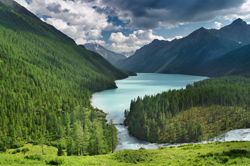Lake deposits reveal future of Alpine regions
Improved knowledge of environmental changes enables scientists to better understand the impacts on lake ecology, water and hydro-electric supplies, and winter tourism. Furthermore, data obtained can be compared with existing reconstructions of summer temperatures to investigate changes in yearly temperature variability. Researchers in the CLASS project have sampled two lakes; one based in the Swiss alps and the other in central Sweden. Scientists at the Swiss site focused on the last 1 000 years, comparing a particularly warm period known as the ′Medieval warm anomaly′ and a cool period called the ′Little ice age′. Results from the Swedish site were limited to the period AD 1946-2005 and compared in detail with meteorological data. Reconstructions were achieved with the aid of Chryosphyte algae, which produce silicon-based objects known as stomatocysts. The stomatocysts are retained in lake deposits and can be studied in detail using a scanning electron microscope. The algae are known to be sensitive to the break up of lake ice, which correlates with average October to April air temperatures. The CLASS consortium has successfully created a method for cold-season climate reconstructions. This has provided unique insight into a range of climatic parameters including long- and short-term temperature variability. The project′s findings reveal a strong link with ocean current circulation patterns, known as the North Atlantic Oscillation (NAO), which control local winter temperatures and precipitation. Increased knowledge of the impact of the NAO on sensitive mountain regions across Europe will help policy-makers and scientists to prepare for future climate changes. They will then be in a position to take the best course of action in an attempt to mitigate their effects.



